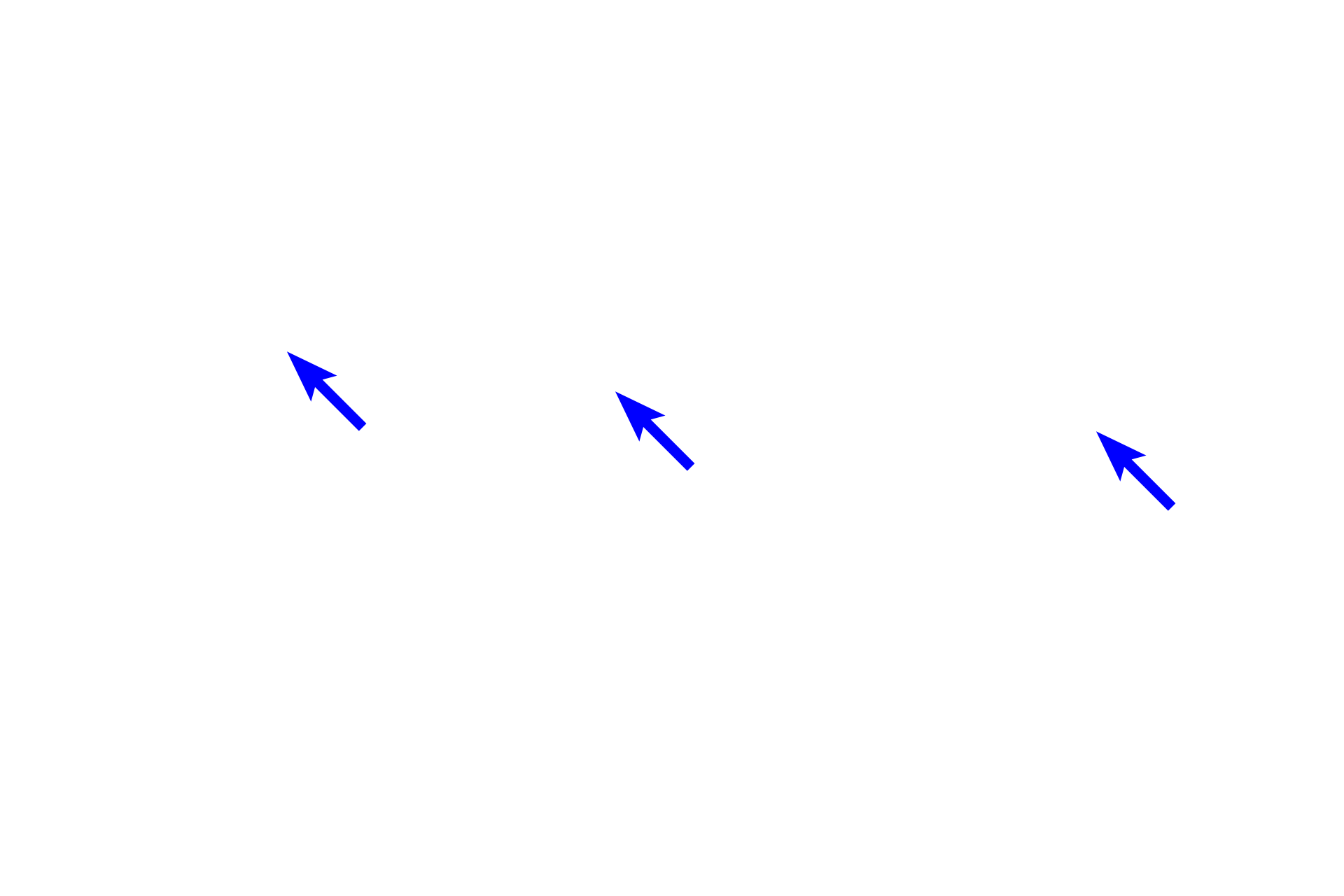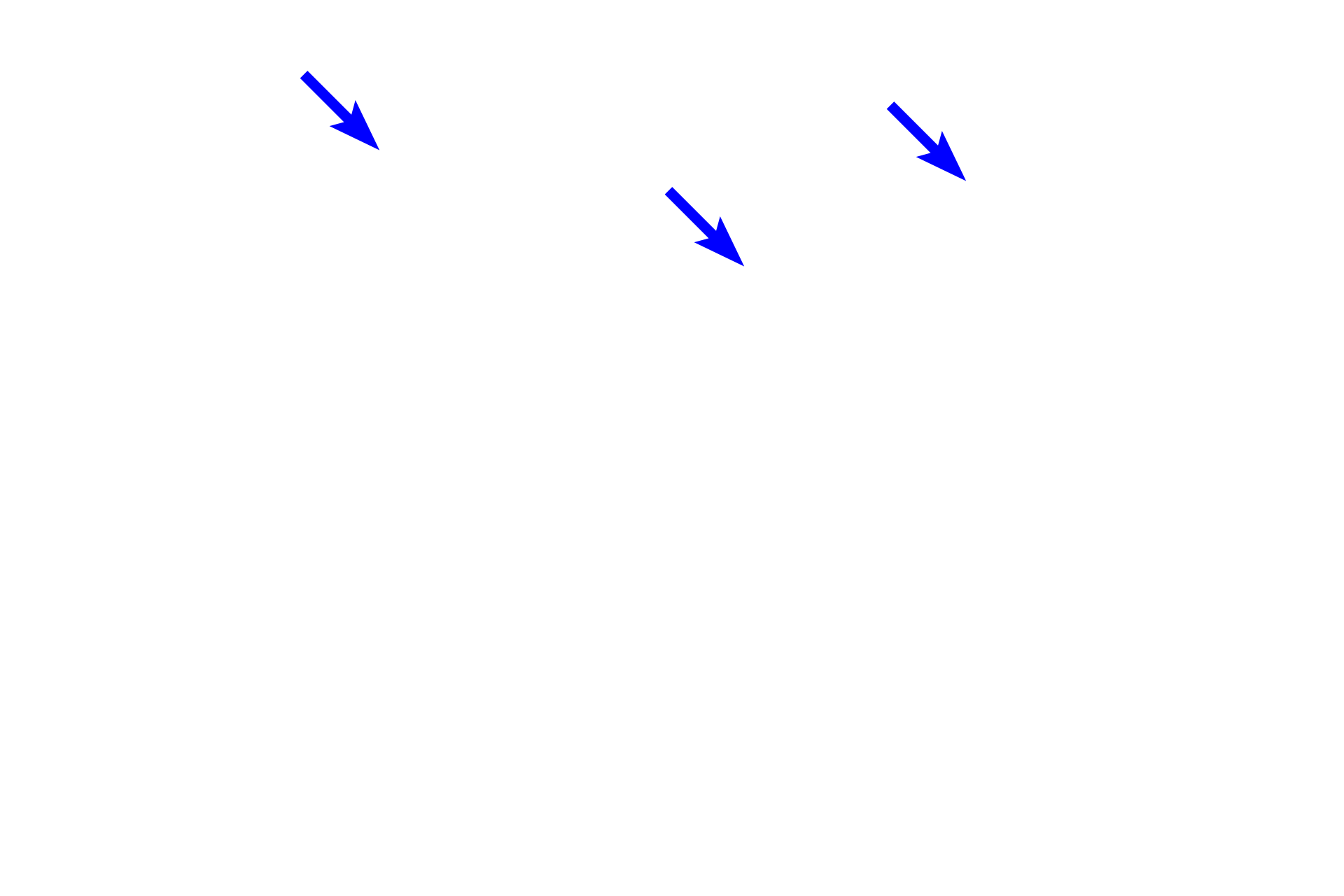
Stratum corneum - Thin skin
There is normally an abrupt transition between the stratum granulosum and the stratum corneum. Stratum corneum consists of non-living keratinized cells or squames that consists of a cornified cell envelope surrounding a matrix of aggregated tonofibrils. These cells are continuously shed from the surface of the epidermis and are replenished through the upward migration and ongoing keratinization of epidermal keratinocytes. The keratin matrix accounts for the strong eosinophilic staining seen in these cells. 400x

Epidermis
There is normally an abrupt transition between the stratum granulosum and the stratum corneum. Stratum corneum consists of non-living keratinized cells or squames that consists of a cornified cell envelope surrounding a matrix of aggregated tonofibrils. These cells are continuously shed from the surface of the epidermis and are replenished through the upward migration and ongoing keratinization of epidermal keratinocytes. The keratin matrix accounts for the strong eosinophilic staining seen in these cells. 400x

Stratum basale
There is normally an abrupt transition between the stratum granulosum and the stratum corneum. Stratum corneum consists of non-living keratinized cells or squames that consists of a cornified cell envelope surrounding a matrix of aggregated tonofibrils. These cells are continuously shed from the surface of the epidermis and are replenished through the upward migration and ongoing keratinization of epidermal keratinocytes. The keratin matrix accounts for the strong eosinophilic staining seen in these cells. 400x

Stratum spinosum
There is normally an abrupt transition between the stratum granulosum and the stratum corneum. Stratum corneum consists of non-living keratinized cells or squames that consists of a cornified cell envelope surrounding a matrix of aggregated tonofibrils. These cells are continuously shed from the surface of the epidermis and are replenished through the upward migration and ongoing keratinization of epidermal keratinocytes. The keratin matrix accounts for the strong eosinophilic staining seen in these cells. 400x

Stratum granulosum
There is normally an abrupt transition between the stratum granulosum and the stratum corneum. Stratum corneum consists of non-living keratinized cells or squames that consists of a cornified cell envelope surrounding a matrix of aggregated tonofibrils. These cells are continuously shed from the surface of the epidermis and are replenished through the upward migration and ongoing keratinization of epidermal keratinocytes. The keratin matrix accounts for the strong eosinophilic staining seen in these cells. 400x

Stratum corneum
There is normally an abrupt transition between the stratum granulosum and the stratum corneum. Stratum corneum consists of non-living keratinized cells or squames that consists of a cornified cell envelope surrounding a matrix of aggregated tonofibrils. These cells are continuously shed from the surface of the epidermis and are replenished through the upward migration and ongoing keratinization of epidermal keratinocytes. The keratin matrix accounts for the strong eosinophilic staining seen in these cells. 400x

- Squames
There is normally an abrupt transition between the stratum granulosum and the stratum corneum. Stratum corneum consists of non-living keratinized cells or squames that consists of a cornified cell envelope surrounding a matrix of aggregated tonofibrils. These cells are continuously shed from the surface of the epidermis and are replenished through the upward migration and ongoing keratinization of epidermal keratinocytes. The keratin matrix accounts for the strong eosinophilic staining seen in these cells. 400x

Dermis
There is normally an abrupt transition between the stratum granulosum and the stratum corneum. Stratum corneum consists of non-living keratinized cells or squames that consists of a cornified cell envelope surrounding a matrix of aggregated tonofibrils. These cells are continuously shed from the surface of the epidermis and are replenished through the upward migration and ongoing keratinization of epidermal keratinocytes. The keratin matrix accounts for the strong eosinophilic staining seen in these cells. 400x

Image source >
Image taken of a slide in the University of Iowa slide collection.